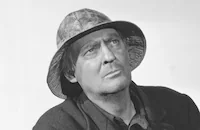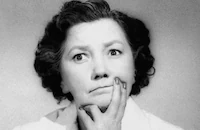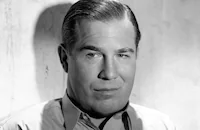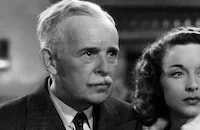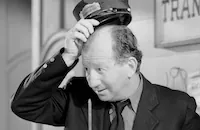The first of her films to bear the Production Code seal of approval, The Girl From Missouri (1934), highlights Harlow's vibrant beauty and blossoming natural talent as an actress. Falling somewhere between comedy and light drama, it tells the story of Eadie (Harlow), a young girl who runs away from home in hopes of landing a millionaire husband. Though her "hotsy-totsy" looks and lack of breeding continually get her labeled as a floozy, Eadie remains determined to marry well without compromising her virtue. The Production Code's influence is noticeable in the film's handling of the potentially touchy subject matter. Originally called Eadie Was a Lady, the title was then changed to Born to Be Kissed, which the Code Administration deemed too suggestive. While the American title became simply The Girl From Missouri, the movie was released in the UK under the decidedly un-ambiguous title 100% Pure. Brassy sidekick Patsy Kelly as Harlow's man-hungry best friend is a treat to watch, and real-life Missouri native Harlow brings humanity and compassion to an otherwise unremarkable role.
The Girl From Missouri marked the second time Harlow worked with director Jack Conway, who also called the shots on 1932's Red-Headed Woman. He would go on to direct Harlow again in the 1936 romantic comedy Libeled Lady and her final film Saratoga(1937). Accomplished writer and Harlow friend Anita Loos penned the sharp screenplay, sharing credit (as she often did) with husband John Emerson. Known also for writing the novel and screenplay for the similarly themed Marilyn Monroe vehicle Gentlemen Prefer Blondes(1953), Loos also wrote two other Harlow flicks, Red-Headed Woman and Saratoga. Harlow's biggest connection to the crew of this picture was undoubtedly with cinematographer Harold (Hal) Rosson, to whom she was married at the time. Unfortunately for the couple, their brief marriage broke up before The Girl From Missouri was completed. Rosson, who had already shot most of the picture, was replaced by Ray June and went uncredited in the final print. Rosson was her third and last husband, though she did go on to a famous love affair with actor William Powell before her death in 1937.
Producer: Jack Conway, Bernard H. Hyman
Director: Jack Conway, Sam Wood (uncredited)
Screenplay: Anita Loos, John Emerson
Cinematography: Ray June, Harold Rosson (uncredited)
Costume Design: Adrian
Film Editing: Tom Held
Original Music: Dr. William Axt
Principal Cast: Jean Harlow (Edith 'Eadie' Chapman), Lionel Barrymore (Thomas Randall 'T.R.' Paige), Franchot Tone (T.R. 'Tom' Paige Jr.), Lewis Stone (Frank Cousins), Patsy Kelly (Kitty Lennihan).
BW-72m. Closed captioning.
by Andrea Foshee







